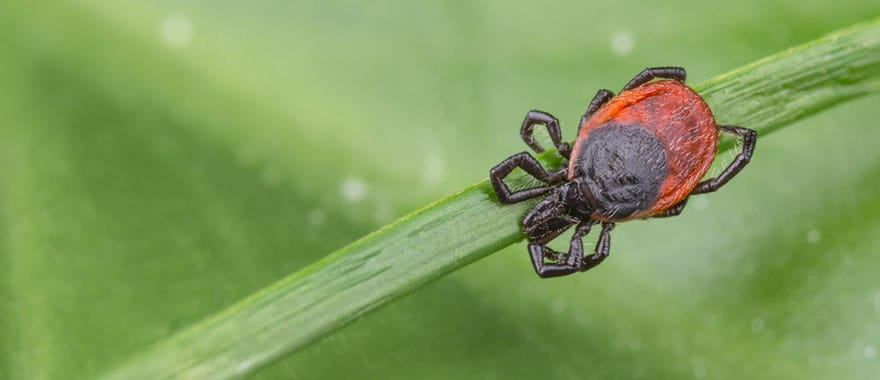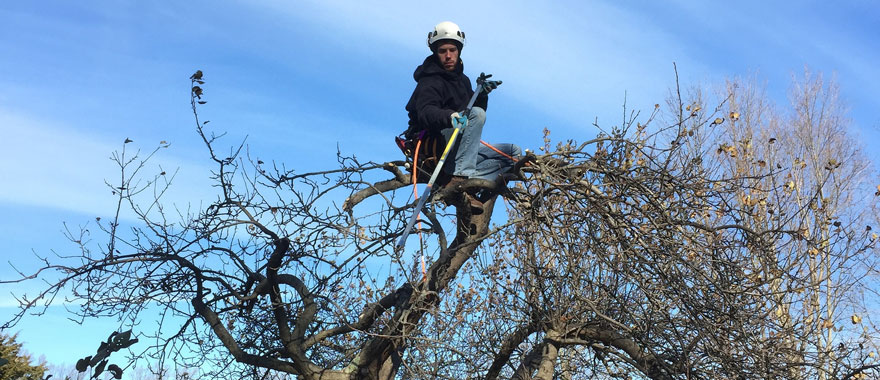 Few things are as beneficial to a fruit tree as regular pruning. Unfortunately, it’s also one of the most commonly overlooked tasks and many apple, pear and other fruit trees are left unpruned for years.
Few things are as beneficial to a fruit tree as regular pruning. Unfortunately, it’s also one of the most commonly overlooked tasks and many apple, pear and other fruit trees are left unpruned for years.
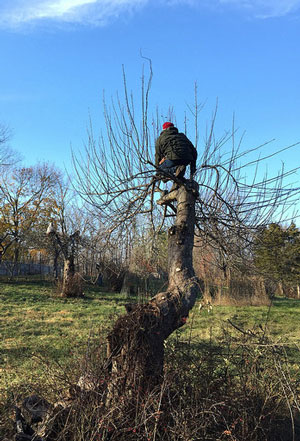
Removing excess growth results in increased fruit production
Winter, including late winter/early spring, is the ideal time to prune your fruit trees.
For details on when to prune specific fruit trees commonly grown in CT, check out this handy sheet from the CT Agricultural Experiment Station.
A properly trimmed apple, pear, or peach tree is not only more pleasing to the eye but can yield more and better quality fruit by focusing growth to fruit. Pruning fruit trees improves the tree’s vigor and fruit production while promoting good structure and form.
Reasons to Prune Fruit Trees
- Pruning removes dead or diseased wood that could otherwise allow pathogens, insects and fungal attacks to enter the tree and inhibit a tree’s ability to close wounds.
- It removes vertical branches (suckers), which are upward-growing branches that drain too much energy from a main limb. These growths—called water sprouts—can ruin the form of a tree by reaching up into higher branches, where they cause rubbing and entanglement.
- Tree trimming removes crossing and/or rubbing branches to promote good form and eliminate areas where rubbing will open a wound in the tree.
- Pruning removes branches that grow back toward the center of a tree, as these wayward growths tend to limit the light and airflow that are necessary for the proper ripening of fruit.
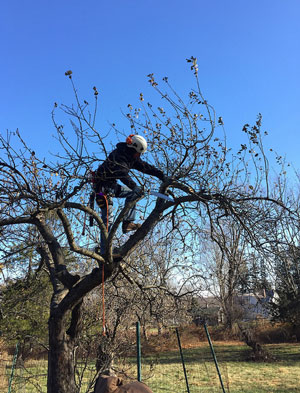
Proper apple tree pruning means getting up close and personal with it
- Proper pruning improves tree structure for long-term strength and health by limiting the tree’s height and width while maintaining a central leader. This will help prevent a tree from splitting or fracturing during storm conditions. It also helps ensure that fruit doesn’t grow out of reach.
- A good trim enables light penetration for fruit development while increasing airflow in the center of the tree to help reduce fungal attacks.
- When done correctly, pruning encourages a plentiful supply of new limbs (not water sprouts), which will begin to bear fruit their second year
When to Prune Fruit Trees
Although you can prune apple, pear, or peach trees at any time of year, there are a few things to keep in mind during different seasons.
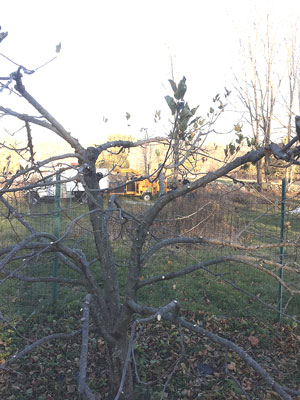
A well-pruned apple tree may look strange now but it will bear more fruit next spring
- Spring Pruning – A great deal of cutting in early spring may cause excessive loss of sap and can impact fruit yields.
- Summer Pruning – This removes leaves (which provide “food” for the tree), slows fruit ripening, and exposes fruit to sunburn. If you’re not concerned about fruit yield, summer pruning can be used generally to slow down overly vigorous trees that are too large or to structurally prune a tree that has not been pruned in many years.
- Winter Pruning – This is usually the ideal time for serious pruning because the tree is dormant. Parasites, insects and fungi are also dormant which gives tree a head start on wound closure while influencing the tree’s spring growth. No pruning is performed, however, when the temperature falls below 20° F, as such frigid conditions can cause dieback in trimmed limbs.



